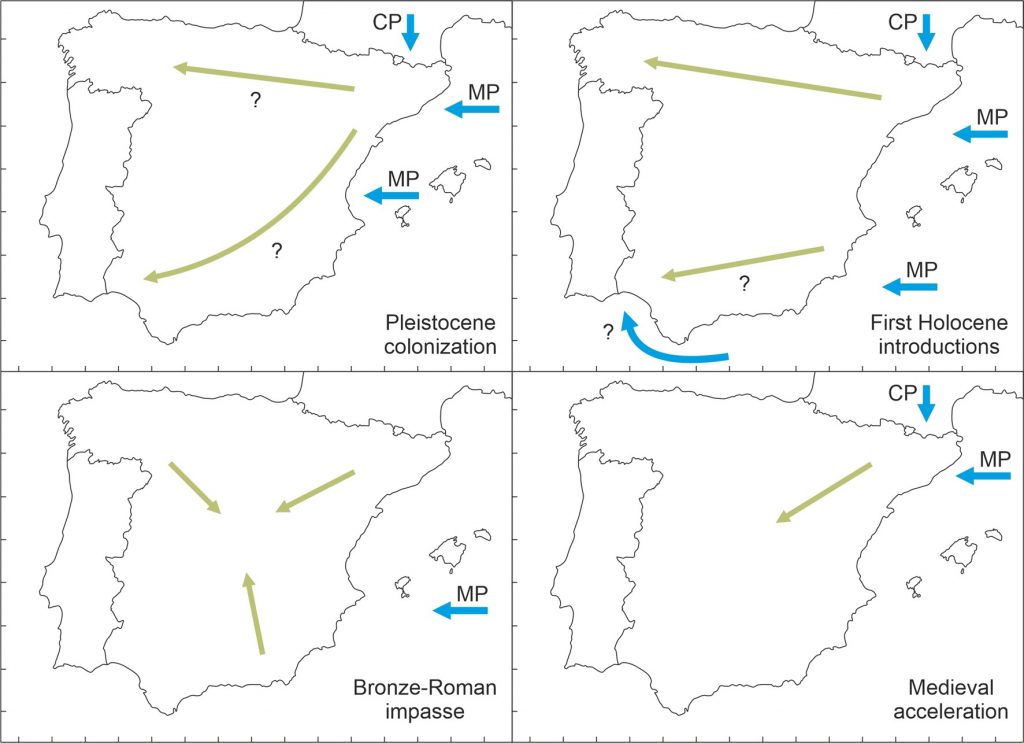Cannabis entered the Iberian Peninsula well before its domestication
-
A study shows that Cannabis entered the Iberian Peninsula in its wild form during the Upper Paleolithic and underwent two further introduction waves, one in the Neolithic and another in the Middle Ages, likely in cultivated forms.
-
The main routes of entry were situated in the NE and the dispersal occurred by terrestrial and maritime pathways, depending on the epoch. The spreading across the whole IP did not occur until the Bronze Age.
Until now, the tempo and mode of colonization of the Iberian Peninsula (IP) by Cannabis sativa, its further internal spreading and the potential cultural and environmental factors involved remained unknown. But a recent meta-analysis of the available evidence carried out by a team of 12 palynologists from across the IP, led by the Botanical Institute of Barcelona (IBB) researcher Valentí Rull, has brought to light the historical biogeography of this plant since its pre-domestication arrival.
After the analysis of a nearly comprehensive database of almost 60 IP sites with palynological evidence of Cannabis, the research team concluded that the first scattered records of this pollen type date from the Middle and Upper Paleolithic (150,000 to 12,000 yr BP) and would have entered the IP by maritime (Mediterranean) or terrestrial (European) pathways.

Arrival (blue arrows) and internal dispersal (green arrows) pathways of Cannabis into the Iberian Peninsula since the Late Pleistocene, based on palynological evidence. CP, continental pathway; MP, maritime pathway.
A first burst of introductions, likely in a cultivated form, occurred during the Neolithic (7000-5000 yr BP) using similar paths. A period of reduced Cannabis arrivals (mostly via maritime Mediterraean pathway) occurred between the Chalcolithic and the Roman Epoch (4500-2000 yr BP), when the innermost parts of the IP were colonized (Late Bronze).
A second, likely anthropogenic, introduction acceleration took place in the Middle Ages (1500 yr BP onward) using the maritime and continental pathways. Maximum cultivation and hemp retting activity was recorded during Modern Ages (16th-19th centuries), coinciding with the increased demand of hemp fiber to supply the Spanish royal navy for imperial expansion and commerce.
A potential link between Cannabis colonization/introduction bursts and climatic warmings has been observed that should be tested with future studies. Regional moisture variations seem to be less influential. The results of this research will be compared with archaeological and historical evidence to clarify the role of human migrations and cultural changes in the historical biogeography of Cannabis in the IP.
BP, before present
Reference:
Rull, V., Burjachs, F., Carrión, J.S., Ejarque, A., Fernández, S., López-Sáez, J.A., Luelmo-Lautenschlaeger, R., Ochando, J., Pérez-Díaz, S., Revelles, J., Riera, S., Rodríguez, S. 2023. Historical biogeography of Cannabis in the Iberian Peninsula: a probabilistic approach based on palynological evidence. Perspectives in Plant Ecology, Evolution and Systematics, 58: 125704.














